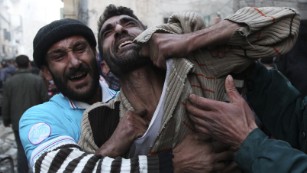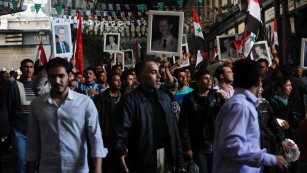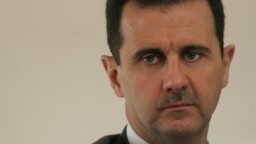Syria's Bashar al-Assad: West is to blame for refugee crisis
Syrian President Bashar al-Assad is blaming Western nations for fueling the refugee crisis by supporting opposition groups in his country's bloody civil war.
"If you are worried about them, stop supporting terrorists," he said in an interview with Russian news organizations. "That's what we think regarding the crisis. This is the core of the whole issue of refugees."
Europe is struggling to deal with unusually large numbers of migrants arriving at its borders, many of them refugees fleeing the years-long conflict in Syria that has killed more than 220,000 people.
Western leaders have criticized al-Assad for presiding over the violent fragmentation of his country, a war that helped spawn the rise of the militant group ISIS and has driven more than four million Syrians to flee abroad.
But the Syrian President told Russian media Tuesday that European countries should take the blame.
"Europe is responsible because it supported terrorism," he said in the interview at his home in Damascus, the capital.

Syria's civil war in pictures


'European double standards'
It wasn't clear exactly what actions al-Assad was referring to. The European Union in May 2013 ended an arms embargo on rebel groups fighting the Syrian government. The United States, meanwhile, has been offering limited support to moderate Syrian rebels in the fight against ISIS.
"Can you feel sad for a child's death in the sea and not for thousands of children who have been killed by the terrorists in Syria?" al-Assad said, referring to images of a dead Syrian boy that shocked the world. "And also for men, women, and the elderly? These European double standards are no longer acceptable."
Despite his bitter accusations, al-Assad said he was willing to shake hands with any leader who would join the fight against ISIS and hoped to cooperate with the West and Saudi Arabia in building a "real antiterrorist coalition," the Russian news agency Interfax reported.
Opinion: West reaps what it has sown
U.S. accused of 'willful blindness'
He said his forces weren't communicating or cooperating tactically with the U.S.-led coalition that's carrying out airstrikes against ISIS positions in Syria and Iraq.
"They cannot accept the reality that we are the only power fighting ISIS on the ground," he said in reference to the United States. "For them, maybe if they cooperate with the Syrian Army, this is like a recognition or our effectiveness in fighting ISIS."
He accused the U.S. government of "willful blindness" on the matter.
Al-Assad said he would resign if the people of Syria demanded it in a democratic process, but that he would not step down solely under pressure from the United States, the United Nations or any other outside power, according to Interfax.
A democratic solution to Syria's crisis appears impossible at the moment, with control the country divided among different armed groups and more than half of all Syrians driven from their homes by the fighting. Elections held in the past under al-Assad, which he won by huge margins, have been criticized by opposition groups and Western governments.
News Courtesy: www.cnn.com











